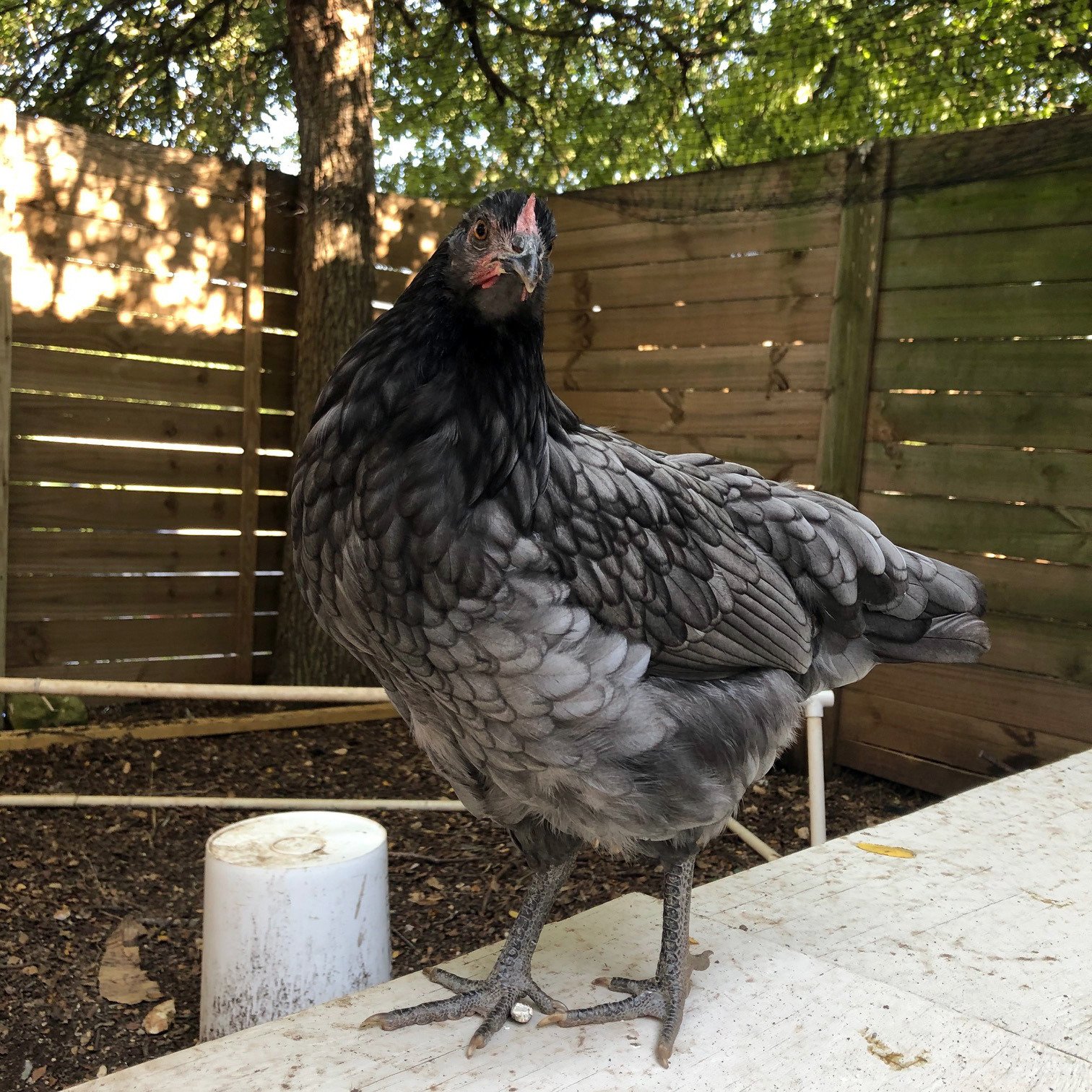clickchicks
Songster
For discussion: what is the average age that a hen stops growing and is considered "filled out" weight-wise?
I have my 3 hens. A Barred Rock, a Sapphire Gem, and an Australorp, all are right at or just under 6 months old.
Originally I had a 2nd Australorp who passed away, she was emaciated at necropsy so I've been checking everyone's weight every few weeks just to make sure. So far, everyone has gained at each weight in.
The BR is just over 3 1/2 lbs, the Australorp is at 4 1/4 lbs and the Gem is around 3 1/4lbs.
All of them were originally from hatcheries, which as I understand it means they are usually smaller. But when do they reach their full weight? Aside from the Gem, which are supposed to be a little smaller, these girls seem shrimpy compared to the 6-7 lbs Dr. Google says they should be.
They have 24/7 access to food, this is what they eat: https://muenstermilling.com/store/products/chicken-food/milestone-starter-grower-chicken-food/
Its a starter/grower but I plan to switch to their brand of layer once this bag is done. They have free access to oyster shell, though on that note none of them have shown signs of being ready to lay, other than combs/wattles turning red. No squatting, don't really seem to eat the ES, no one is interested in the nesting boxes.
Pictures:



They are all very active and love to forage. They don't free range, but do have a fairly large area they get to enjoy during the day (about 30ft x 20ft). Sometimes I give them a handful of sunflower seeds or some fruit as a treat, but mostly they just forage and eat their chicken food.
I have my 3 hens. A Barred Rock, a Sapphire Gem, and an Australorp, all are right at or just under 6 months old.
Originally I had a 2nd Australorp who passed away, she was emaciated at necropsy so I've been checking everyone's weight every few weeks just to make sure. So far, everyone has gained at each weight in.
The BR is just over 3 1/2 lbs, the Australorp is at 4 1/4 lbs and the Gem is around 3 1/4lbs.
All of them were originally from hatcheries, which as I understand it means they are usually smaller. But when do they reach their full weight? Aside from the Gem, which are supposed to be a little smaller, these girls seem shrimpy compared to the 6-7 lbs Dr. Google says they should be.
They have 24/7 access to food, this is what they eat: https://muenstermilling.com/store/products/chicken-food/milestone-starter-grower-chicken-food/
Its a starter/grower but I plan to switch to their brand of layer once this bag is done. They have free access to oyster shell, though on that note none of them have shown signs of being ready to lay, other than combs/wattles turning red. No squatting, don't really seem to eat the ES, no one is interested in the nesting boxes.
Pictures:



They are all very active and love to forage. They don't free range, but do have a fairly large area they get to enjoy during the day (about 30ft x 20ft). Sometimes I give them a handful of sunflower seeds or some fruit as a treat, but mostly they just forage and eat their chicken food.









